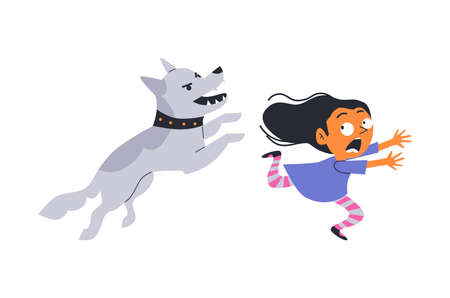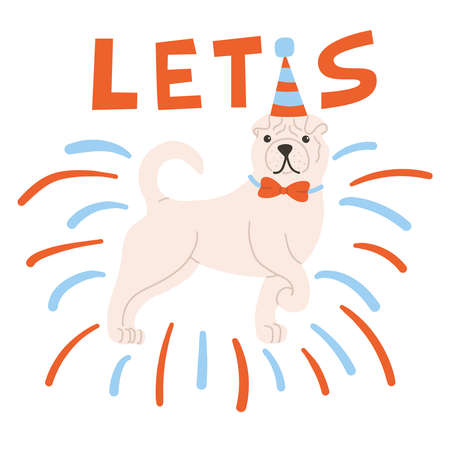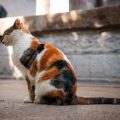Understanding Indian Household Layouts and Pet Considerations
When it comes to home safety and pet comfort in India, the unique structure of Indian households plays a crucial role. Urban flats, commonly found in cities like Mumbai, Delhi, and Bangalore, are typically compact with limited outdoor access. These apartments often have balconies with grills, tiled floors, and minimal storage space—factors that can both help and hinder pet safety. On the other hand, independent houses in towns or suburban areas usually offer more spacious layouts, private gardens, and open courtyards. While these features provide pets with ample room to move and play, they may also introduce risks like unguarded staircases, open gates, or accessible street entry points. Traditional Indian homes might include puja rooms (prayer spaces), jhoolas (swings), or indoor plants that could pose hazards or temptations for curious pets. Whether you live in a high-rise flat or an independent bungalow, understanding your home’s layout is the first step towards creating a safe and comfortable environment for your furry companions.
Common Safety Hazards in Indian Homes
Indian households have unique safety challenges that require special attention, especially when pets are part of the family. Identifying and addressing these area-specific risks is crucial for maintaining a safe and pet-friendly environment. Below, we outline some of the most common hazards found in Indian homes and provide practical suggestions to reduce potential dangers.
Open Balconies and Unsecured Grills
Many Indian homes feature open balconies or windows with grills. While they allow for ventilation and scenic views, these areas can be dangerous for curious pets—especially cats and small dogs. Unsecured or widely spaced grills present a risk of pets squeezing through or getting stuck, leading to serious injuries.
| Hazard | Potential Risk to Pets | Suggested Solution |
|---|---|---|
| Open Balcony | Falls from height, injury, escape | Install pet-proof netting or closely spaced grills |
| Unsecured Grill | Pets getting stuck or escaping | Regularly check and secure grills; add mesh if needed |
Poor Electrical Wiring
Older homes, especially in Tier 2 and Tier 3 cities, may have exposed wiring or loosely hanging cables. Puppies and kittens are known to chew on wires, risking electric shocks or burns. It’s essential to use cable organizers and secure all wiring out of reach of pets.
Local Cleaning Supplies and Chemicals
The Indian market offers a variety of cleaning agents, disinfectants, and phenyl-based floor cleaners. Many of these products contain chemicals that are harmful if ingested by pets or if they come into contact with their skin. Even traditional remedies such as neem oil or certain herbal sprays should be used with caution around animals.
| Cleaning Product Type | Risk Level for Pets | Safer Alternatives |
|---|---|---|
| Phenyl Floor Cleaner | High (Toxic if licked) | Pet-safe floor cleaners (labelled non-toxic) |
| Bleach/Disinfectant Sprays | Moderate to High (Irritation, poisoning) | Diluted vinegar solutions, plant-based cleaners |
| Naphthalene Balls | Very High (Fatal if ingested) | Avoid using; opt for natural repellents like dried lavender sachets |
Kitchens: The Heart of Every Home—and a Source of Hazards
Kitchens often have hot surfaces, sharp utensils, and food items that can be toxic to pets such as onions, chocolate, or xylitol-containing sweets. Ensure kitchen doors are closed during meal prep time and store all food securely in cabinets.
Tip: Educate Family Members and Domestic Helpers
Create awareness among everyone in the household—including domestic help—about potential hazards. Simple precautions like closing balcony doors and storing cleaning supplies out of reach go a long way in ensuring both home safety and pet well-being.

3. Pet-Friendly Home Décor and Furnishings
When it comes to Indian households, our love for pets like dogs and cats often means extra attention is needed in choosing the right décor and furnishings. The right choices not only ensure a stylish look but also stand up to the daily challenges that come with furry companions.
Flooring Solutions That Last
For Indian homes, flooring must be durable and easy to clean, especially with pets around. Vitrified tiles and ceramic tiles are excellent options as they resist scratches from claws and are easy to mop, which is crucial during monsoons or shedding seasons. If you prefer a warmer feel, laminate flooring designed for high-traffic areas can be a good pick, but ensure its water-resistant to handle occasional pet accidents. Avoid carpets in high-use areas since they trap fur and odours; instead, opt for washable rugs made from natural fibres like jute or cotton.
Furniture That Withstands Paws and Claws
Paws can be tough on sofas and chairs. Select furniture with metal or hardwood frames, which are sturdy and less likely to absorb odours or stains. When considering upholstery, steer clear of delicate fabrics like silk or velvet. Instead, go for leatherette (faux leather), which is easy to wipe clean and doesnt attract fur, or tightly woven synthetic blends that resist snags. For extra peace of mind, use removable slipcovers that can be machine-washed—this is a lifesaver during the shedding season or after Holi celebrations when things can get messy.
Choosing Pet-Friendly Fabrics
Your choice of fabric makes all the difference in maintenance. Cotton, canvas, and microfiber are great choices for curtains, cushions, and throws as they are durable, breathable in Indian weather, and easy to wash. Avoid heavy drapes that collect fur and dust; lighter materials work better for quick cleaning. Consider darker colours or patterns that disguise paw prints and stains between washes.
Additional Tips for a Harmonious Home
Add some dedicated pet spaces such as washable mats or beds near windows where your pets love to lounge. This keeps them comfortable while protecting your furniture from excessive wear. Place scratch posts for cats near their favourite spots—this helps preserve your furnishings. Finally, always keep some cleaning supplies handy for quick clean-ups so your home remains welcoming for both family members and guests.
4. Safe Temptations: Managing Indian Food and Spices Around Pets
Indian households are known for their vibrant flavours and aromatic spices, but these same ingredients can pose risks to pets if not handled correctly. Many beloved Indian dishes contain ingredients that may be toxic or harmful to cats and dogs, such as onions, garlic, chocolate, certain nuts, and even some spices. The strong aromas of masalas, fried snacks like samosas, or leftover curries can easily tempt your furry companions to investigate or nibble on unsafe foods.
Why Storage Matters in Indian Kitchens
Given the open nature of many Indian kitchens and the frequent use of countertop storage for snacks or masala dabbas (spice boxes), it is crucial to rethink how you store potentially dangerous foods. Pets are curious by nature; unattended plates, low cabinets, or loosely closed containers can quickly become sources of trouble.
Common Harmful Ingredients in Indian Cuisine
| Ingredient | Toxicity Level for Pets | Common Dishes |
|---|---|---|
| Onion & Garlic | High (causes anaemia) | Curry gravies, biryanis, chutneys |
| Chilli Powder & Spices | Gastrointestinal irritation | Tadka, pickles, street food |
| Chocolate (in sweets) | Very High (toxic) | Cakes, desserts like chocolate barfi |
| Nuts (macadamia, raisins) | Moderate to High (toxic) | Laddoos, fruit cakes |
Practical Storage Tips for Indian Homes
- Use airtight containers for all spices and snacks; avoid leaving packets open on countertops.
- Store leftovers immediately in the fridge rather than letting them cool on the dining table where pets can access them.
- Choose upper cabinets or shelves for storing potentially toxic foods—many Indian homes have overhead storage that can be repurposed for pet safety.
- If you enjoy sharing treats with your pet, keep a separate jar of pet-safe snacks so family members don’t accidentally feed them human food.
Cultural Considerations: Festive Food Safety
Festivals like Diwali and Holi often involve an abundance of sweets and savouries within easy reach. Remind guests not to feed pets from their plates, and keep festive platters covered or stored away when not being served. It’s also wise to educate domestic help and younger family members about what foods are off-limits for pets.
By making small changes in how food is stored and handled at home, you ensure both the vibrant spirit of Indian cooking and the safety of your beloved animals go hand-in-hand.
5. Monsoon and Weather-Proofing Tips for Pet Safety
Protecting Pets During Monsoon Season
Indian monsoons can bring heavy rains, thunder, and humidity, creating a challenging environment for pets. Ensure your pet has a dry, warm corner indoors, away from damp walls and windows. Use absorbent mats at entryways to prevent slippery floors. Check your home for leaks or water seepage that could create unsafe conditions or attract pests. If you walk your dog during the rains, use a waterproof raincoat for your pet and thoroughly dry their fur and paws afterward to avoid fungal infections.
Managing Extreme Heat in Indian Summers
Summers in India can be scorching, especially in cities like Delhi, Chennai, or Ahmedabad. Always provide plenty of fresh, cool water for your pets and keep them indoors during peak afternoon hours. Avoid walking dogs on hot pavements as this can burn their paws—early morning or late evening walks are best. Install mesh screens on windows to allow ventilation while keeping mosquitoes out. Consider placing cooling mats or damp towels in your pet’s resting area.
Keeping Pets Safe During Festive Noises
Diwali and Other Celebrations
Festivals like Diwali bring loud crackers and bright lights, which can stress out pets, especially dogs and cats sensitive to noise. Create a safe den-like space with their favourite toys and bedding to help them feel secure. Play calming music or white noise to mask outside sounds. Consult your vet about anxiety-relief options if your pet is particularly sensitive. Ensure all doors and windows are closed to prevent escape if they get scared.
Cultural Sensitivity: Traditional Remedies & Practices
Many Indian households use traditional home remedies such as neem oil to protect pets from ticks during humid months; however, always consult your vet before trying new treatments. Incorporate cultural practices like lighting diyas (lamps) safely—place them out of reach of curious pets to avoid accidental burns.
By weather-proofing your home and being mindful of local traditions and weather extremes, you can keep your furry companions safe and comfortable throughout the year in India.
6. Routine Cleaning and Pest Control the Pet-Safe Way
Maintaining a clean and pest-free home is crucial for both safety and comfort, especially in Indian households where pets are part of the family. Traditional cleaning agents and pesticides commonly used in India can pose health risks to pets, so it’s wise to adopt pet-friendly alternatives that are locally available and effective.
Pet-Safe Cleaning Techniques
For daily cleaning, opt for natural solutions such as diluted white vinegar or lemon juice mixed with water. These can effectively clean floors, tiles, and surfaces without leaving behind toxic residues. Neem leaves, widely accessible across India, can be soaked in water overnight and used as a natural disinfectant for mopping floors—safe for pets and gentle on their paws.
Replacing Harsh Chemicals
Avoid phenyl-based cleaners and strong bleach, which are commonly found in Indian stores but are harmful if ingested or absorbed through your pet’s skin. Instead, look for herbal floor cleaners made from plant extracts like tulsi (holy basil), neem, or eucalyptus, many of which are now available in Indian supermarkets and online platforms. Always ensure surfaces dry completely before letting pets walk on them.
Pest Control Without Harm
Pest issues such as ants, cockroaches, and mosquitoes are common in India. Rather than using chemical sprays or powders, try sprinkling turmeric powder or placing bay leaves in kitchen cabinets to deter insects naturally. For mosquito control, use pet-safe herbal mosquito repellents containing citronella or lemongrass oil rather than coils or mats which release fumes hazardous to pets. Additionally, keep windows fitted with mesh screens to reduce insect entry.
Regular Pet Area Maintenance
Clean your pet’s bedding frequently with hot water and mild soap. Avoid synthetic fragrances or fabric softeners that could irritate your pet’s skin. Sweep and vacuum regularly to remove fur and dander, especially during shedding seasons common among popular breeds in India like Indies, Labradors, or Persian cats.
By incorporating these locally-sourced cleaning methods and pest control alternatives, Indian families can create a safer home environment for both humans and their beloved pets—without compromising on hygiene or health.
7. Community and Cultural Considerations
When ensuring home safety and pet-friendliness in Indian households, it’s essential to recognise the cultural context and community dynamics that influence daily life. Pet ownership is growing steadily in urban India, but attitudes towards animals can vary widely across regions and communities. Understanding neighborly etiquette is crucial; always keep your pets leashed or within your property, especially in apartment complexes or gated societies, where some residents may not be comfortable around animals. Communicate openly with neighbours about your pets’ behaviour and take proactive measures to address noise or cleanliness concerns.
India also has a significant population of street animals—particularly dogs and cats—that often interact with household pets. While compassion for stray animals is embedded in many Indian traditions, it’s important to manage these interactions carefully to prevent the spread of diseases like rabies or parvovirus. Ensure your pets are fully vaccinated and avoid unsupervised contact with street animals. If you wish to help strays, consider supporting local NGOs or participating in community feeding drives, while maintaining hygiene protocols.
Culturally, pets hold a unique place in Indian society. In some families, animals are regarded as auspicious, while others may have reservations due to religious beliefs or practical considerations. Respecting these perspectives fosters harmony within multi-generational homes and diverse neighbourhoods. Celebrate festivals safely by keeping pets indoors during fireworks or loud celebrations like Diwali and Holi, and educate family members about pet-friendly practices.
Ultimately, creating a safe and pet-friendly home in India involves not just adapting your living space, but also engaging thoughtfully with your community and respecting local cultural values. By doing so, you contribute positively to both animal welfare and neighbourly relations.


